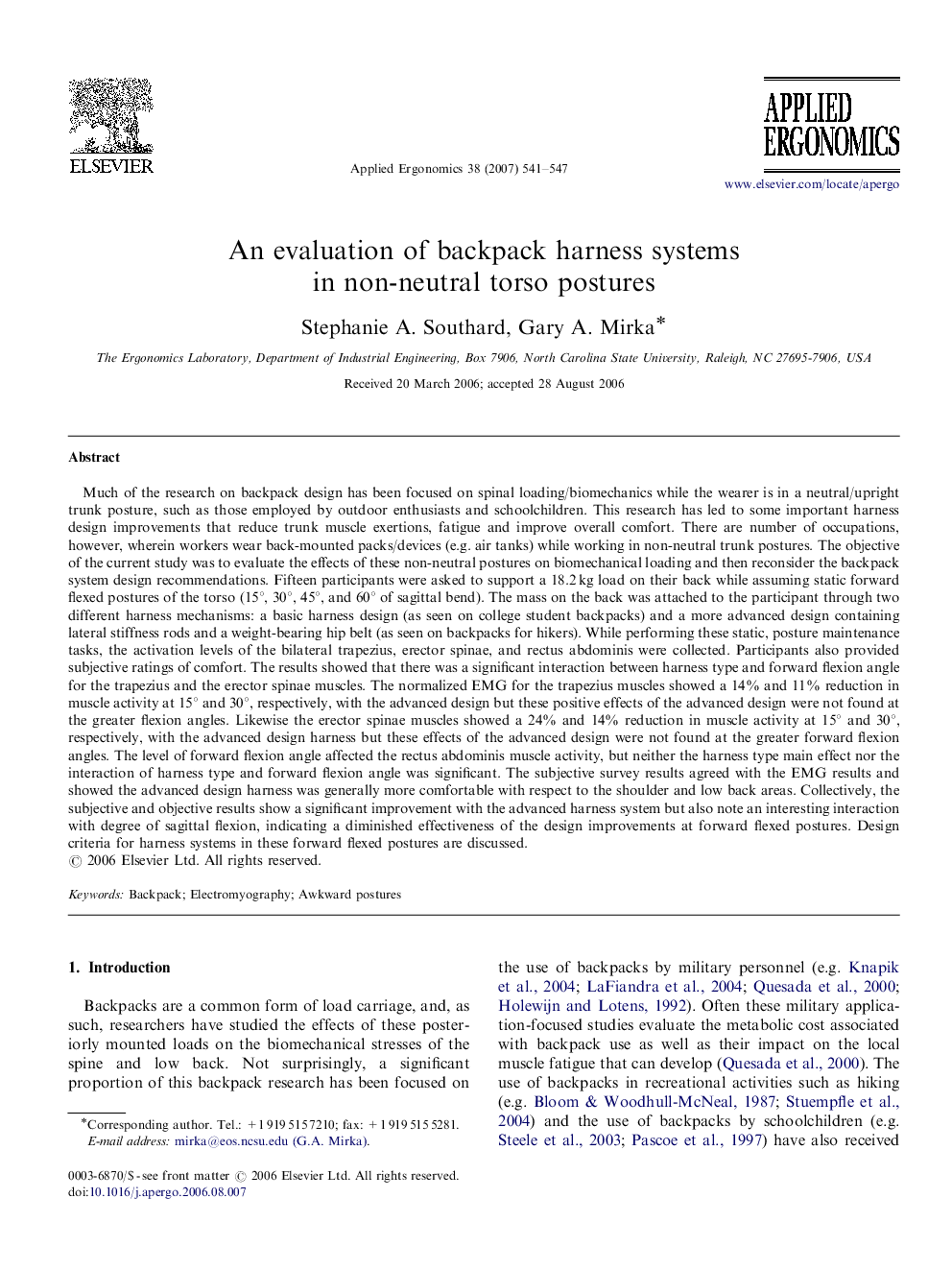| کد مقاله | کد نشریه | سال انتشار | مقاله انگلیسی | نسخه تمام متن |
|---|---|---|---|---|
| 548903 | 872296 | 2007 | 7 صفحه PDF | دانلود رایگان |

Much of the research on backpack design has been focused on spinal loading/biomechanics while the wearer is in a neutral/upright trunk posture, such as those employed by outdoor enthusiasts and schoolchildren. This research has led to some important harness design improvements that reduce trunk muscle exertions, fatigue and improve overall comfort. There are number of occupations, however, wherein workers wear back-mounted packs/devices (e.g. air tanks) while working in non-neutral trunk postures. The objective of the current study was to evaluate the effects of these non-neutral postures on biomechanical loading and then reconsider the backpack system design recommendations. Fifteen participants were asked to support a 18.2 kg load on their back while assuming static forward flexed postures of the torso (15°, 30°, 45°, and 60° of sagittal bend). The mass on the back was attached to the participant through two different harness mechanisms: a basic harness design (as seen on college student backpacks) and a more advanced design containing lateral stiffness rods and a weight-bearing hip belt (as seen on backpacks for hikers). While performing these static, posture maintenance tasks, the activation levels of the bilateral trapezius, erector spinae, and rectus abdominis were collected. Participants also provided subjective ratings of comfort. The results showed that there was a significant interaction between harness type and forward flexion angle for the trapezius and the erector spinae muscles. The normalized EMG for the trapezius muscles showed a 14% and 11% reduction in muscle activity at 15° and 30°, respectively, with the advanced design but these positive effects of the advanced design were not found at the greater flexion angles. Likewise the erector spinae muscles showed a 24% and 14% reduction in muscle activity at 15° and 30°, respectively, with the advanced design harness but these effects of the advanced design were not found at the greater forward flexion angles. The level of forward flexion angle affected the rectus abdominis muscle activity, but neither the harness type main effect nor the interaction of harness type and forward flexion angle was significant. The subjective survey results agreed with the EMG results and showed the advanced design harness was generally more comfortable with respect to the shoulder and low back areas. Collectively, the subjective and objective results show a significant improvement with the advanced harness system but also note an interesting interaction with degree of sagittal flexion, indicating a diminished effectiveness of the design improvements at forward flexed postures. Design criteria for harness systems in these forward flexed postures are discussed.
Journal: Applied Ergonomics - Volume 38, Issue 5, September 2007, Pages 541–547